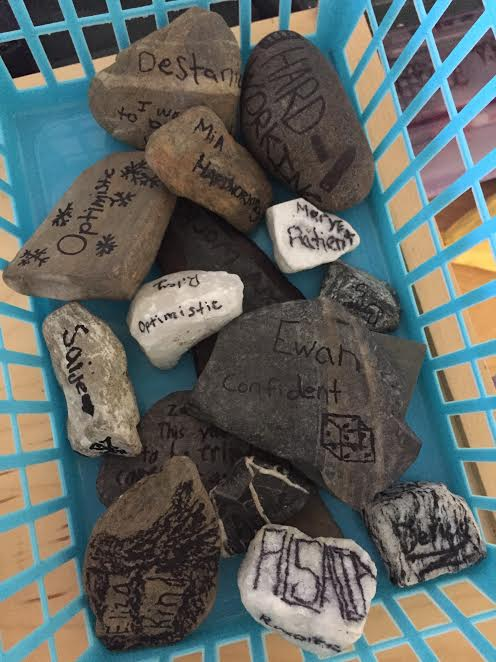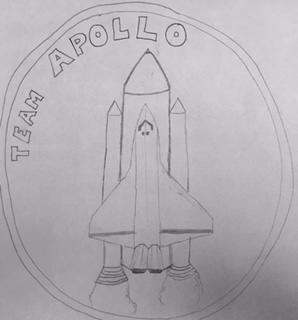Change Is In The Air
Maura Kelly is a humanities teacher at Peoples Academy Middle Level in Morrisville, Vermont and co-director of PLP Pathways. She has a passion for working with young adolescents and believes in the power of a strong middle level program in developing students to be ready to face the challenges in our world today. When Maura is not teaching you can find her out skiing and biking around the state of Vermont.
Here at Peoples Academy Middle Level, as the air is becoming more cool and crisp, leaves are not the only changes that we are noticing around our school. This year the theme of our work is “practice and play” within the context of personalized learning and a proficiency based system.
We have undergone major systematic changes within our school since last year to shift towards a model we hope will allow us to reflect the three pillars of personalized learning. PAML has moved from being configured with four straight grade teams to multi-age teams where teachers will loop with students to developing stronger relationships with our students and families. We also now have Teacher Advisory everyday using the Developmental Designs Circle of Power and Respect to start out day followed by a 25 minute Academic Time every morning. This Academic Time or AT is where students can be scheduled to meet with teachers across the building based on individual needs. We are also using a web based scheduling program called Enriching Students, where we can schedule students for extra support or expansion within a content area to help our show mastery within a proficiency based learning context.
Another exciting change is the development of what we are calling Opportunity Time at the end of the every day. This is a 40 minute block where students collaborate with academic advisors to work on personal goals and projects based around our negotiated curriculum theme. The hope is this time develops into true personalized learning for all students in grades 5-8. Despite all of these changes, some things have remained the same, the importance of building a strong team identity, fostering a positive school culture and building relationships with our students. I want to highlight a few things that we have done with our students at the start of the year that help to build these youth adult partnerships.
It Begins Day One
We knew going into the start of this school year we wanted one of our key focuses to be students forming relationships within our house and developing a strong culture. This started the very first day of school starting our morning with the Circle of Power and Respect or C.P.R. building relationships, sharing, and having fun with our students. In the afternoon on the first day of school we took all of our students out onto our expansive nature tail and asked each student to find a rock that spoke to them. One that made them stop and think and one that they could carry with them.
Once back in the classroom we had all students come up with a brainstorm list of characteristics and scholarly habits that would help them to be successful this year. We then gave students the prompt: “This year I want to (be)...” and think about one characteristic or trait that they could have as a focus this school year and write it on their rock.
Finally we went around the circle in our TA and had every student share out that characteristic or trait they wanted to work on and have the collection of rocks in our classroom. It is a nice reminder to have students go back and take their rock out of our collection and carry it with them for the day as a reminder of what they are working on.

Every Team Needs a Name: Our is Apollo!
As we have restructured it gave us the unique opportunity to partner with students to create name our new teams. As a school we had thoughts that it could have been much easier for the office, families and the teachers if we had simply assigned names to the teams over the summer and crossed that item off the list. However, we recognized that for many of our students, after their grade being split between houses and possibly looping with some of the teachers from the previous year, they needed to feel some ownership and belonging to this newly assigned team so we gave the important task of naming the teams to the students. To have a small amount of continuity across the school we decided that names should fall under the theme of adventure and travel.
Within our team we had students individually brainstorm a list of names that they liked that they felt fit under this theme. Next, we had students work in groups and negotiate with each other on what theme they felt would best represent the culture of our team with the understanding that these names will stay in the school even after they have moved on from PAML. Once student groups settled on a name, we had them create a logo for their name and create a pitch for the other students on team.
In order to make a final selection each TA had their students give their pitches and vote on the name that they felt best identified the culture of our team. Finally, during one of our weekly team town meetings with all of the students on our team, we had the names from the three TAs give their pitches to the whole team, explaining to students why we should choose their team name idea and how it helped to define our team culture.
On our team we had many really strong name ideas, however in the end the students selected Apollo to be our new team name.

Looking Ahead to Personalization
Looking back over the past month of school there are so many changes that as a school we have been trying to navigate with our students. I feel that we have worked hard to incorporate voice and choice into the decisions that we can make with our students and have been partnering with them as we are all on this journey together.
We have rolled out our PLP for the year starting with our identity work. We have has students working on a personal expression project and a bio poem that will be showcased on their “Who Am I?” page of their portfolio. I have really been making an effort to talk with students and get feedback on what they felt went well last year and changes that they would like to make with their PLPs.
Looking ahead we have also started our work using the Negotiated Curriculum Framework that is also used at the Edge Academy. Last year, after being inspired by the work at The Edge, we used this framework for the first time and found it to be the best part of the year for both teachers and students. When talking with students about their PLPs, our theme work from last year kept coming up again and again regarding what students want their portfolios to be about. I am excited to partner with students in the development of our negotiated curriculum theme over the next few weeks and watch the changes of this year unfold.